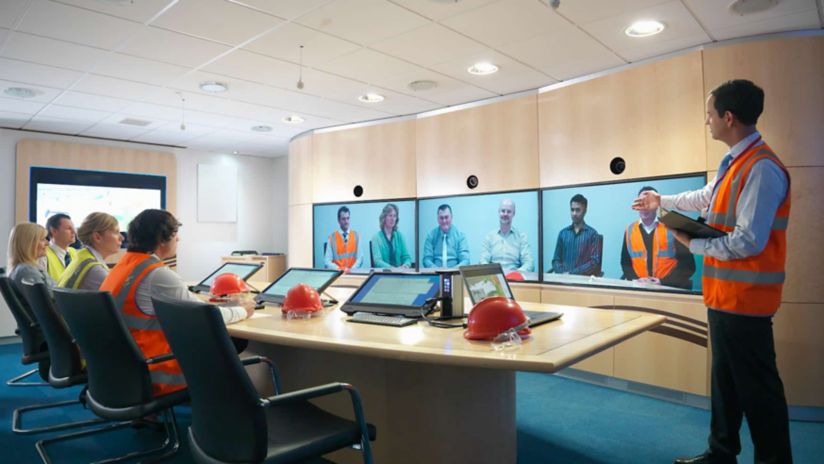Finding balance with hybrid working
Discover how to manage hybrid working in your business. And balance productivity, company culture, and employee satisfaction.

Hybrid working has many benefits for businesses. But it doesn’t always look the same in every organisation. There are a variety of approaches to implementing and managing hybrid working.
In this article, we introduce some of the most common types of hybrid models. And offer some tips on how to manage hybrid working. This is to help your business get the right balance between a strong company culture, productivity and employee satisfaction.
The different approaches to hybrid working
The flexible hours model
This approach is also known as the individual-led model. It enables people to choose their own hours and location. This can give you or your team greater autonomy to determine when and where you’ll work.
This model is particularly useful in knowledge economy roles. And where you or your team are accountable for meeting specific task-based objectives.
The split week model
This model involves splitting the workweek between remote days and office-based days.
You can set days throughout the week which determine when you’ll come into the workplace. For example, you may decide that you or your employees will spend Mondays and Wednesdays in the office. And the remaining part of the week working remotely.
This differs from the flexible hours model because the ‘office days’ are typically predetermined. And are often the same days for everyone who works in the business.
Which days you pick to come in, depends on your business. Do you have weekly team meetings on a Monday? If so, this may be a good choice for an ‘office day’.
The manager-led model
It’s probably also worth noting the manager-led model. In this model of hybrid working, team leaders agree which days their individual teams will be in the office.
This may only be useful for larger small businesses, or those who operate from different sites. So it may not be a viable option for you.
How to manage hybrid work with a focus on wellbeing
With different models and ways of working to choose from, it may be hard to decide which is the best approach for your business. You also have to consider what happens after you introduce hybrid working. How can you ensure it’s a success and suits your individual business needs?
Here are some tips on how to implement and manage a hybrid working environment.
Consider different needs
To build a hybrid model that works, you can speak to your team to learn about what they want and why. You can take into account their needs, preferences, and the different challenges that could arise.
It’s also important to consider what you need as a business owner. And which business operation will support you best.
Encourage people to share their experiences and ideas. These insights can then help inform your policies and decisions.
Build culture through communication
Clear communication channels, processes and policies are vital. Be clear from the start about your expectations for hybrid employees. If you think joining a weekly team meeting should be mandatory, communicate this and explain why.
You should consider identifying opportunities for social interaction and relationship-building during times when you collaborate face-to-face. And dedicate time towards virtual team building activities and check-ins when operating off-site.
This can help foster a strong company culture that runs throughout remote and on-site working.
Support your business by investing in technology
People need the right technology to do their jobs, whether they are in the office or working remotely.
Hardware, software, video conferencing solutions, and secure access to your network are just a few of the tools remote workers may need.
Learn more on how to manage tech challenges when working remotely.
Invest in your workplace experience
Hybrid working changes the nature of the workplace. You have to create an environment that is welcoming and comfortable for employees, wherever they are.
You may want to consider, for example, how you run meetings. In a hybrid model, you have to ensure remote team members can still fully participate. Read our article ‘How to thrive while working remotely’ for more tips and considerations.
You also have the opportunity to think about your workspace in new ways.
Your office may be used less frequently with hybrid working, but it also becomes more important. For example, it may become a place used primarily for social interactions. So you may want to consider implementing changes to your place of work. This could include setting aside more space for collaboration, rather than desk space.
Seek and give continuous feedback
Regularly gather feedback from employees on how the hybrid model is working for your business and make adjustments as needed. It’s also important to reflect on what’s working well and identify areas for improvement.
Encourage open communication and collaboration to ensure that everyone feels heard and valued.
How to encourage employees into the office
Many business leaders want their teams to spend at least some time in the office. Face-to-face time can help maintain company culture and improve collaboration.
One way to motivate people to come into the office is to focus on purposeful and meaningful face-to-face collaboration.
Purposeful use of office time
Some reasons or ways to motivate and incentivise your team to come into the office can include:
- Social events
- Team building activities
- Opportunities for professional development, including training sessions and networking events
- Collaborative sessions, such as brainstorming workshops.
You can also combine a meeting or a workshop with a social event to increase the opportunity for team building.
Hybrid working continues to evolve
New models of hybrid working will emerge as individuals and businesses adapt to changing circumstances. Finding balance with hybrid working is about understanding what’s right for your business and your employees. Then clearly communicating your approach and keeping it under review.
Explore more on this topic
Internet that fits your business journey
Get internet that helps take you further. Our experts can help you find the right connection to power your business.



